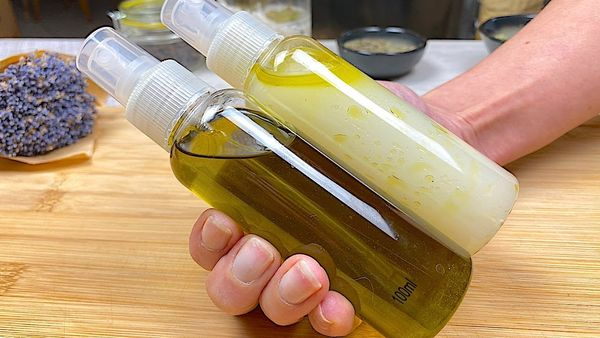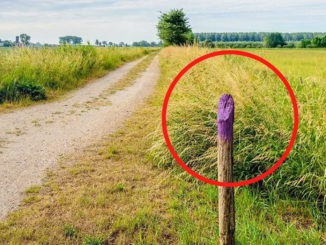Logic puzzles are always a great way to test our problem-solving skills and attention to detail. The image above presents a deceptively simple challenge: out of the seven cups shown, which one will fill up first? At first glance, it might seem like an easy question, but if you’re not careful, you might end up with the wrong answer. Ready to take on the challenge?

Why This Puzzle Tricks So Many People
At first, most people glance at the image and rush to answer. They might choose the cup closest to the teapot or the one that appears to have the shortest path. However, this puzzle isn’t as straightforward as it seems.
One of the most common mistakes people make is ignoring the blocked paths. The diagram cleverly includes sections where pipes are blocked or sealed, preventing water from flowing to certain cups. If you don’t pay close attention to these details, you’re likely to pick the wrong cup.
Another mistake is assuming that all paths are open and functional. Our brains are wired to think in terms of simplicity and efficiency, which often leads to us overlooking small barriers or obstructions in a puzzle like this.
The takeaway? Details matter. To solve puzzles like this, slowing down and carefully analyzing each component is crucial.
Step-by-Step Guide to Solving the Puzzle
Let’s solve this puzzle together. Grab a cup of tea (or coffee) and focus on the diagram. We’ll analyze the flow of water step by step.
- Start from the Source
The teapot is pouring water into the topmost pipe. From here, the water will naturally follow gravity, flowing down into the first available path. But not all paths are open. - Follow the Flow
The water flows down the central pipe and begins to branch out toward different cups. However, not all cups will receive water because some pathways are blocked. - Analyze the First Branch
As the water moves downward, it reaches the first branching point. This branch splits into two directions:- To the left, it leads toward cup 5.
- To the right, it leads toward cups 4 and 6.
- Check the Right Branch
Moving to the right, the water encounters two more pathways:- One path leads to cup 4, but it is also blocked at the base, preventing water from reaching the cup.
- The second path leads directly to cup 6.
- Confirm the Flow
Once the water reaches cup 6, it will fill up. No other cup can intercept the water because all other paths are blocked.
The Final Answer: Cup 6

So, the correct answer to this puzzle is cup 6. It’s the only cup with an unobstructed path for the water to flow into. Cups 4 and 5, despite being closer in appearance, are blocked and cannot fill up first.
Why Puzzles Like This Are Great for Your Brain
Puzzles like this aren’t just fun—they’re also an excellent way to sharpen your problem-solving skills and boost your logical thinking. Here are a few benefits of tackling logic puzzles:
- Improved attention to detail: Small details often make the biggest difference, as seen in this puzzle.
- Enhanced critical thinking: Analyzing each component step by step trains your brain to approach problems methodically.
- Patience and persistence: Puzzles teach us to slow down and think things through rather than rushing to conclusions.
By practicing regularly with puzzles like this, you can develop sharper analytical skills and even apply them to real-life situations.
Share Your Thoughts and Join the Conversation!
Did you guess the right answer? Or did the blocked paths trick you? Share your reasoning in the comments and let us know which cup you thought would fill up first.
If you enjoyed solving this puzzle, why not challenge your friends and family to see if they can figure it out too? Share this article with them and compare your answers. You might be surprised at how many people miss the small details!
Conclusion: Keep Sharpening Your Mind
Puzzles like this are a fun reminder that things aren’t always what they seem. They challenge us to look beyond the obvious and consider every detail before reaching a conclusion.
So, next time you encounter a tricky riddle or logic puzzle, take a deep breath, slow down, and analyze the situation step by step. Who knows? You might discover that you’re better at solving these challenges than you thought.
Ready for your next brain teaser? Stay curious, keep challenging yourself, and embrace the joy of problem-solving!
Incredible Hair Growth Remedy: Bay Leaves Oil
If you’re looking for a natural solution to promote hair growth and prevent hair loss, bay leaves oil might be the secret you’ve been searching for. Bay leaves are rich in nutrients and antioxidants that can contribute to healthier, stronger hair when used regularly. Here’s how you can make and use bay leaves oil at home to nourish your hair and stimulate growth.
Ingredients:
- A handful of dried bay leaves
- 1 cup of coconut oil or olive oil (as a base)
Instructions:
Prepare the Oil Infusion:
- Place the dried bay leaves in a pot and cover them with the coconut oil or olive oil. You can choose between coconut oil, which is great for nourishing and moisturizing, or olive oil, which is excellent for strengthening and adding shine.
Heat the Mixture:
- Heat the mixture over low heat for about 10-15 minutes. Avoid letting the oil boil; a gentle simmer is enough to infuse the oil with the properties of the bay leaves.
Let It Steep:
- After heating, remove the pot from the stove and let the oil cool completely. It’s best to allow the bay leaves to steep in the oil for several hours or even overnight to maximize the infusion.
Strain the Oil:
- Once the oil has cooled and steeped, strain it through a fine mesh strainer or cheesecloth to remove all pieces of bay leaf. Pour the strained oil into a clean, airtight bottle or jar for storage.
Application:
- To use the bay leaves oil, massage it into your scalp and hair. Start at the scalp and work the oil through to the ends of your hair. Massaging helps improve blood circulation to the scalp, enhancing hair growth.
Leave It On:
- For best results, leave the oil in your hair for at least an hour or overnight if possible. Cover your hair with a shower cap to avoid staining pillowcases.
Wash Out:
- Wash your hair with your regular shampoo and conditioner after the treatment. You might need to shampoo twice to remove all the oil if your hair feels too greasy.
Benefits:
- Promotes Hair Growth: Bay leaves are rich in antioxidants that help stimulate hair follicles and promote stronger and faster hair growth.
- Prevents Hair Loss: The nutrients in bay leaves strengthen hair from the root, making it less prone to falling out.
- Improves Hair Health: Regular use of bay leaves oil can improve the overall health of your hair, making it shinier, softer, and more resilient.
Frequency:
- Use this treatment once or twice a week for the best results in promoting hair growth and preventing hair loss.
This natural remedy is a fantastic way to harness the power of bay leaves for hair care. It’s easy to prepare and use, making it a cost-effective and efficient method to maintain the health and beauty of your hair. Try incorporating bay leaves oil into your hair care routine and see the difference it can make!





Leave a Reply